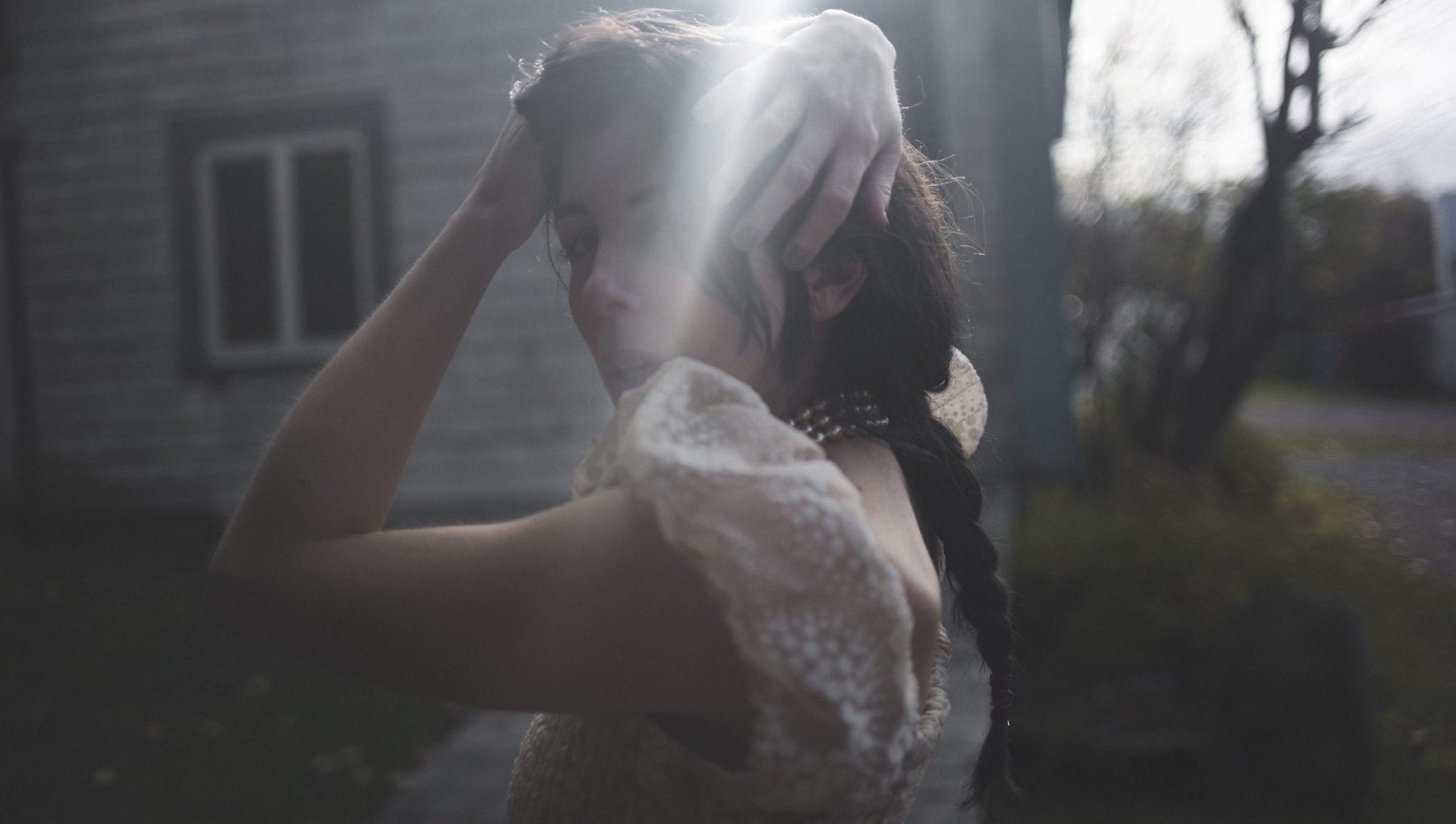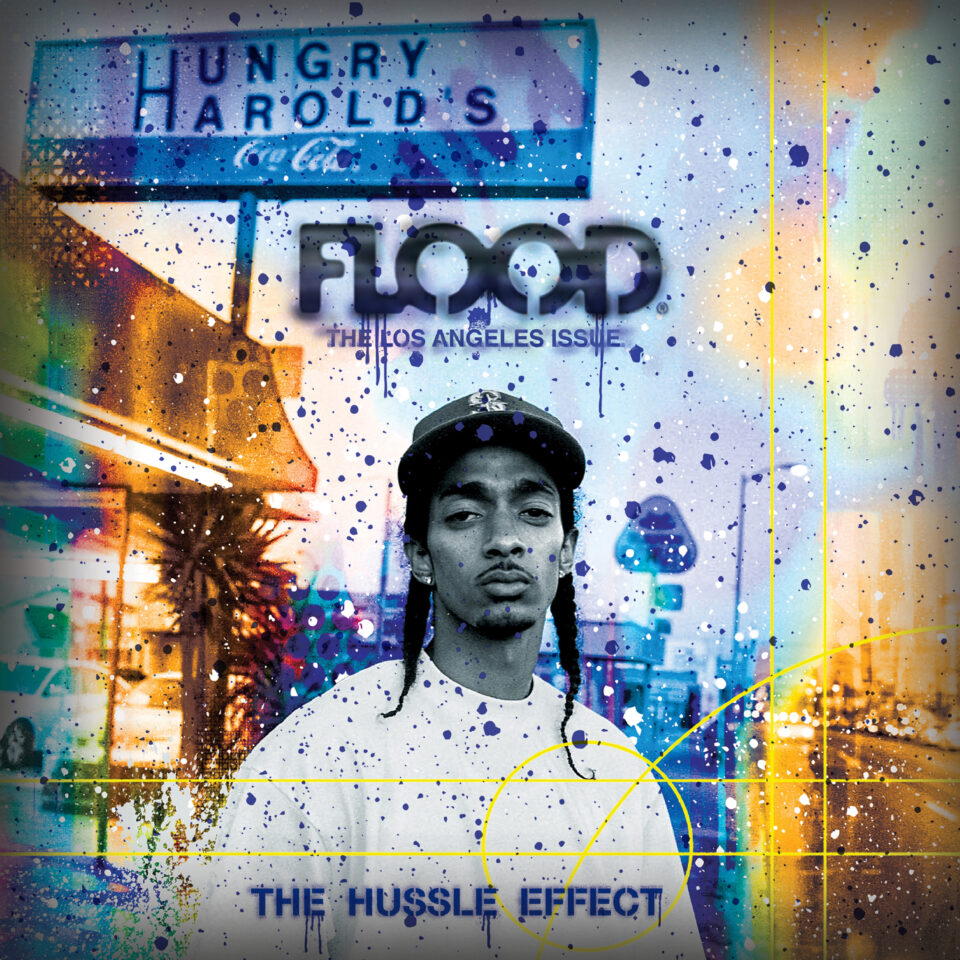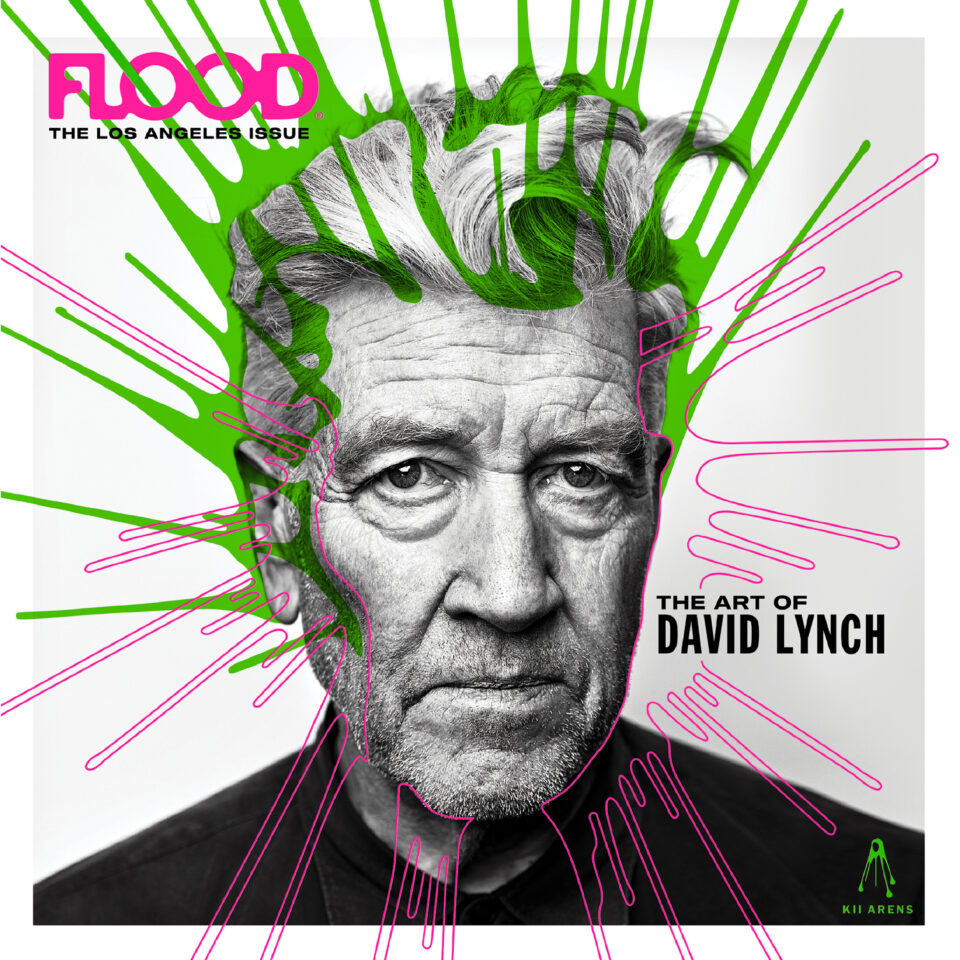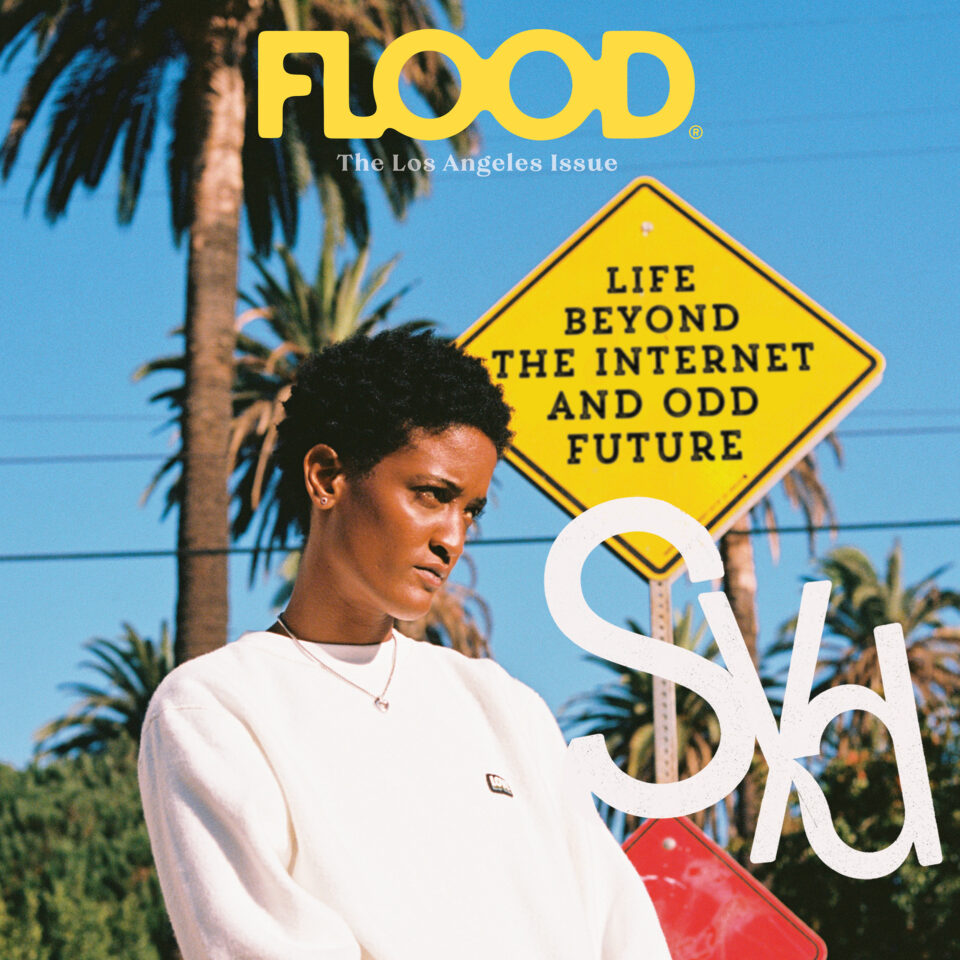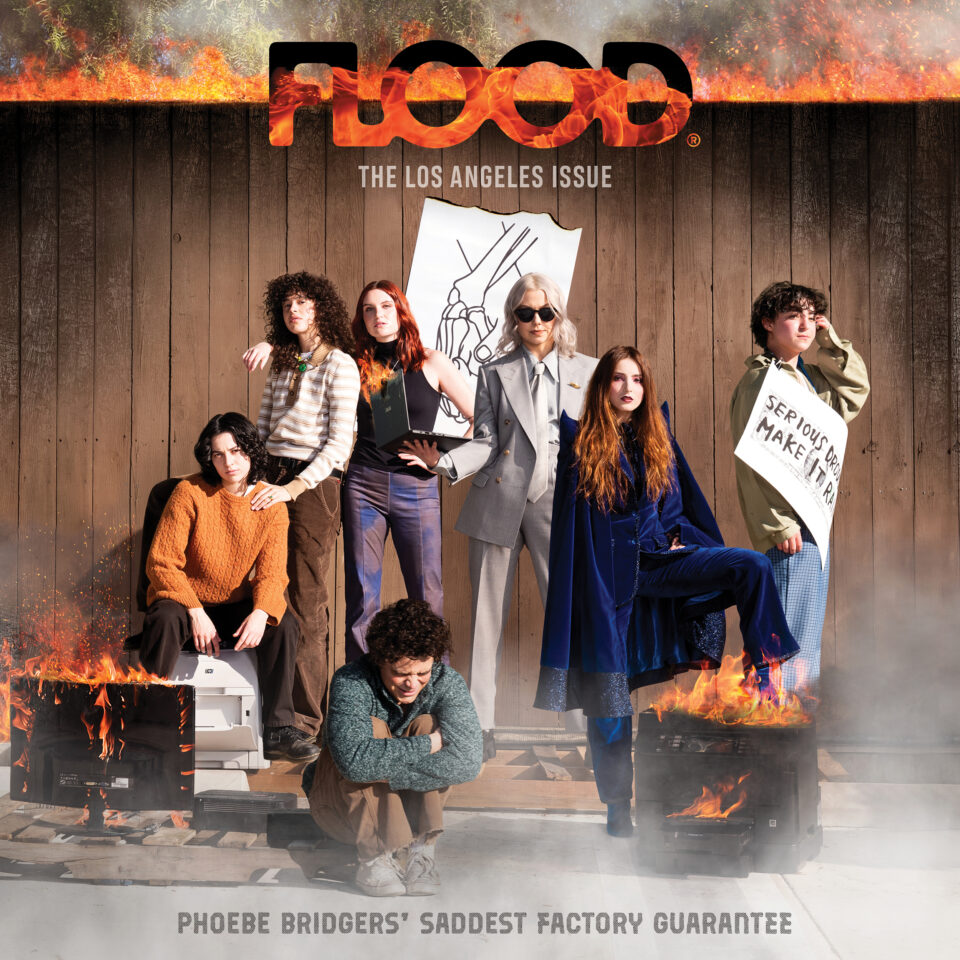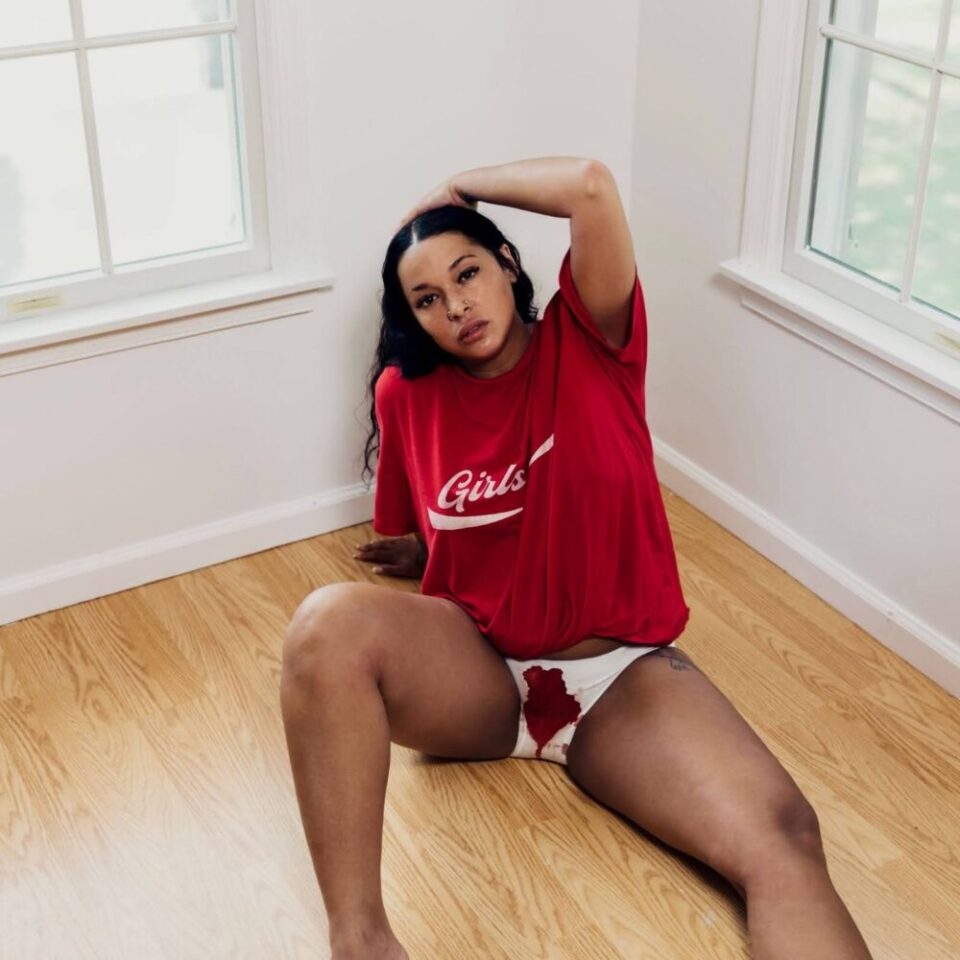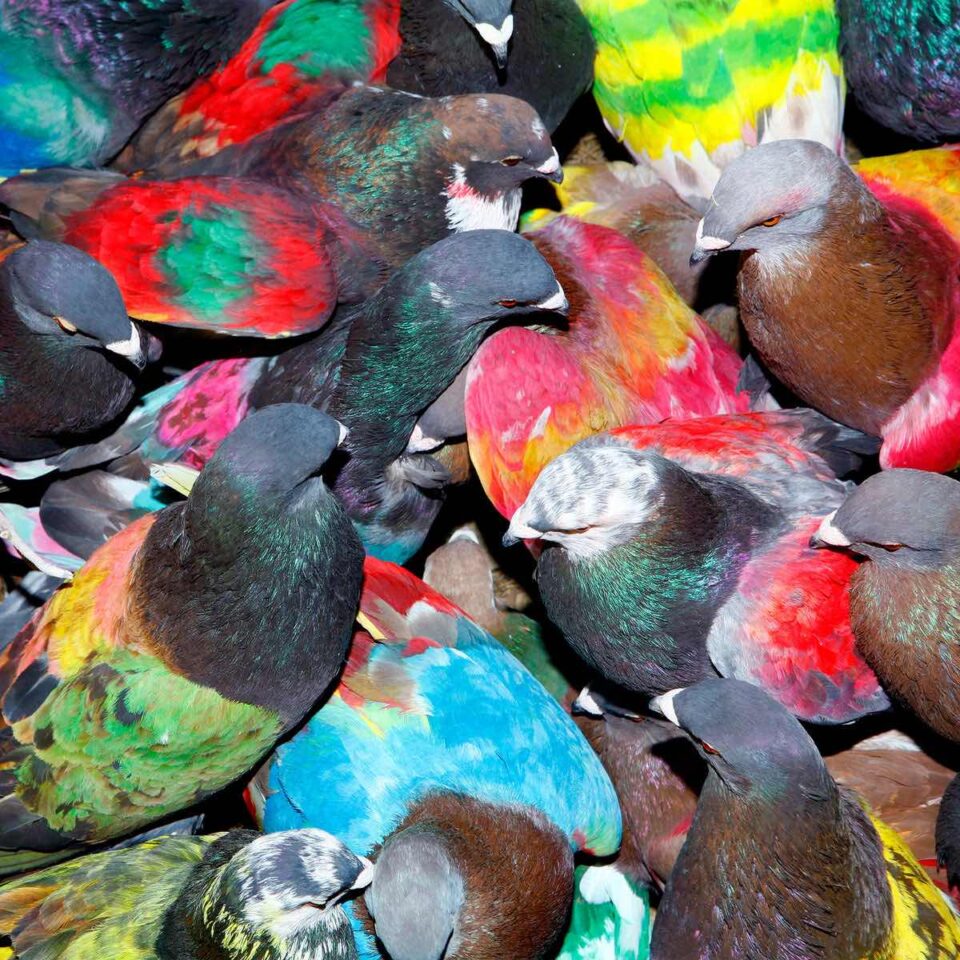Canadian musician Alexandra Levy, who releases music as Ada Lea, has a novelistic approach to her songwriting. She packs minute details of memories, imagined scenarios, or a fusion of both within the span of a few seconds, her voice quickly tip-toeing around finger-plucked acoustic guitars or laidback drums. Lea is concerned with unraveling as much of a scene as possible for the listener, which has made her acrobatically skilled in her hushed delivery.
She first showcased this talent on her 2019 debut album what we say in private, and now she’s returned with the grand follow-up one hand on the steering wheel the other sewing a garden, which finds her further pushing the expectations of her already-boundaryless compositions. When blunted guitars, rolling drumbeats, and shadowy synths are the backdrop for Lea’s folk-rock sound, it’s her provocative lyrics and unexpected vocal prowess that solidify her as one of the most underrated artists around. Whether plucked from her own memory bank or fictionalized, Lea embeds raw emotions into concrete settings. This element of real space is split up by a gradual transition of time, where these songs cross over into all four seasons.
The album’s first track “damn” opens with a New Year’s Eve party and indulgent vices. “I heard you asking around, ‘Hey, could you find me some coke,'” Lea sings. “Every year is just a little bit darker, then the darker gets darker.” Immediately, Lea is fed up with all the gratuitous reveries. A couple tracks later, on “oranges,” a character portrayal spirals into stream-of-conscious ramblings. “If you see Mary hanging on the corner in her raspberry coat,” she begin matter-of-factly. “With the wind brushing past as if on a boat / With motes gleaming along the shore / The dogs in heat, city parks in the daytime.” We’re thrown into Lea’s vibrant world and it’s a thrilling ride.
Ada Lea has shared her track-by-track rundown of one hand on the steering wheel, where she reveals the inspiration behind certain characters and successful song structure experiments. Listen to the album below and dive into her explanations.
1. “damn”
Initially, the vocals had been recorded in Pasadena, with Marshall. When I got back to Montreal, I felt like my vocal performance was too disconnected from the story, and decided to re-record the vocals myself. This was a terrible mistake. I thought being able to record at my own pace would create a freedom to perform the way I had envisioned the vocals sounding—but keeping things in perspective, while tackling vocals alone, was the biggest challenge. In the end, I recorded two versions of the song and sent them to friends to rate which one they preferred. Version one was a “chill post party vibe” and version two was a kind of “angsty drama.” You will know which one we chose.
2. “cant stop me from dying.”
“cant stop me from dying” is a song about a character who dies multiple times throughout the course of an evening—every time she makes a mistake she is allowed to restart with the foresight to act differently. I recorded a demo of this song in Banff, but wasn’t convinced it should be among the chosen few of the ones that would be on the album. I was pretty hesitant, but when I showed the lo-fi demo of this song to Marshall, he immediately was super stoked to work on it, and in turn I became excited about it as well. The final version of the song actually features the vocals, percussion, and some of the original guitar and keys from the Banff demo.
3. “oranges”
I imagine this character, who has gone quiet all of a sudden, introduced to us by hanging her laundry out on the clothesline of a third story apartment building. Fragments of flashbacks to an earlier time: cluster of leaves on the sidewalk, an important intersection, a blustery day, dogs in heat, motor bikes at night, city parks in the daytime, sunrise, William Blake’s Songs of Innocence and of Experience, and, of course, “Wild Orange” tea! We’re not sure what the affiliation is between Mary and the person recounting such a detailed story until we get to the end of the song and they’re situated in the same room for the first time.
I wrote many verses that ended up being cut. This approach was really helpful in the long run, mostly in getting to explore the story in a bit more depth. I love the length of the song format—and album format, for that matter—but it’s limiting in terms of how far you’re able to go in a story; you don’t always have time to explore and communicate everything. I hadn’t done this before (the writing of excess verses), but it’s something I will most definitely do in the future because it helps me figure out what it is that we’re dealing with.
4. “partner”
“partner” is a song about moving through a memory involuntarily—a memory that steals up on you the night after a rager (which takes place the morning after the song “damn”). I recorded a very sketchy demo of this one in Banff; I didn’t have an extension for my headphones, so the piano had to be recorded with the song blaring in the room’s speakers. Obviously this meant that the piano was completely unusable later on, but it still served as a nice outline to work from with Marshall.
Recording this was really exciting. The form completely changed; initially the now-chorus was a section that only appeared once at the end of the song as a kind of outro. Marshall was like, “This section is sick, it should come earlier, and again.” So we messed around with the form a bit and it became verse, chorus, verse, chorus. On a day off, I watched the Taylor Swift doc and the next morning woke up humming a new section for “partner.” I don’t know if the two moments are connected…but I just had the feeling that the song needed one more section. So before my 9:30 a.m. departure for Marshall’s, I wrote the bridge—the part that goes “Last year you were / Sitting at the diner with neon lights…” Fun fact is that we used a $15 radio mic that had been given to me as a gift by an ex to record the bridge. Marshall loved it and ended up ordering the same one off eBay immediately after.
5. “saltspring”
Several years ago, my dear friend Simon got trapped on the beach overnight because he had poorly planned his trip home and missed the last ferry going to the island. He left me a very pitifully humorous voicemail telling me his phone was about to die, and he might also die out there in the dark of the night, and that he had spent several hours trying to make a fire by rubbing two sticks together to no avail.
And my newness spoke to your newness and it was a thing of endless: It’s the dead of winter, in the woods, in the middle of nowhere in QC, and I’ve nearly finished recording the album and I’m feeling like something is missing. I reflected on this and knew I wanted an instrumental, or a collage piece to fit between side A and side B.
A fun fact is that I was reluctant to use this piece because I had started writing lyrics to it and wanted to save it for a future record. In the end, I decided that, should I still want to record a version with lyrics, I could! I could do anything! No rules! And that it might even be cool to have a future album reference an earlier piece.
6. “my love 4 u is real”
This was the first song I wrote for the album, though I didn’t know it would be part of any album at that point. I hadn’t finished recording what we say in private yet, and wrote “my love 4 u is real” overnight during a snowstorm in January in Montreal. Tim, who worked on what we say in private, had given me the keys to his studio while he was out of town, which was a big trek from where I was living at the time.
The night of the snowstorm, I wrote and recorded a demo of the song and listened to that while walking to the night bus. (Listening to demos to new songs is usually my favorite part of the creation process.) I remember it being so cold that when the song finished playing, I didn’t want to take my hand out from my glove, so I just kept my over-ear headphones on without anything playing. This became my winter hack to stay warm: replacing earmuffs with headphones.
7. “backyard”
Wrote this song about the relationship I had with my neighbor as kids. Our backyards were attached by a wooden gate we always left open. We wished we were twins and would make up all these rituals to unify our identities. The rituals were not rooted in any tradition or lineage other than what we, as children, in our grand naïveté, passed along to one another. We’d cut pieces of our hair and leave fairy dust out, prick our palms, etc.
Those neighbors eventually moved, and up until last year I was still living with my parents, in that same place. The fence is the exact same as it was over 20 years ago, save this huge tree that has grown sideways, completely blocking the gate with its trunk. I thought it curious that although I was old enough now to go anywhere, I really just wanted to stay in the same place.
8. “writer in New York”
Working on this song was a real treat. It came together really nicely and quickly. We used all these interesting percussive instruments that Marshall had collected over the years. Fun fact: The part that sounds like a low tom is actually played on a gourd.
9. “violence”
A quote from an LRB interview with Jacqueline Rose: “Violence arises when power knows itself to be illegitimate…which is also the result of a line between the gap of violence and power, which is to say that you enact violence because you know your power is fraudulent.”
This was the last song I finished recording. I was having so much difficulty finishing the song that at one point I was playing with the notion that I would just cut the song from the album. It was mid-January and it needed to be done, but my mental blocks were so great that I physically couldn’t do it—I would shut down and feel so terrible. I wanted to change the last verse and had set a goal of just finishing the lyrics, but I couldn’t come up with anything that felt good to me. A mixture of low self-esteem and confidence and perfectionism was standing in the way of finishing the album.
I was given a strict task of aiming for it to be authentic and not perfect, of reminding myself that my self-worth isn’t tied to what’s on the recording. Even with this in mind, I still couldn’t do it. It wasn’t until one morning, when I woke up around 3:30 a.m., which at that time wasn’t that unusual. After puttering around for a bit, I eventually realized it was the perfect moment to record. I wrote the last verse and recorded it in one go, and passed out immediately after.
10. “hurt”
I loved working on “hurt.” It was pretty much complete after only a couple of days with Marshall. We recorded the guitar and ended up keeping the scratch vocals—vocals we had recorded super quickly as place holders. It was immediately my favorite song on the record.

